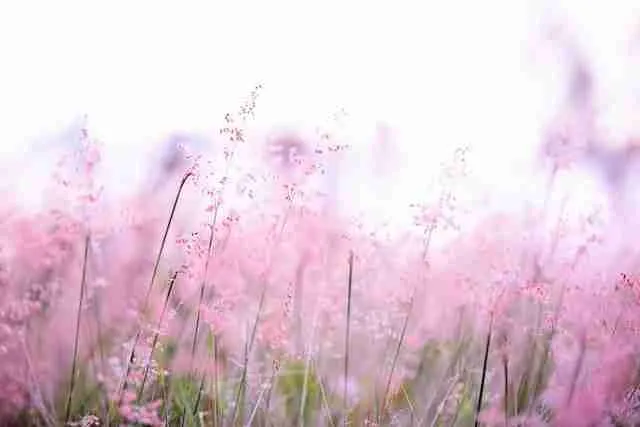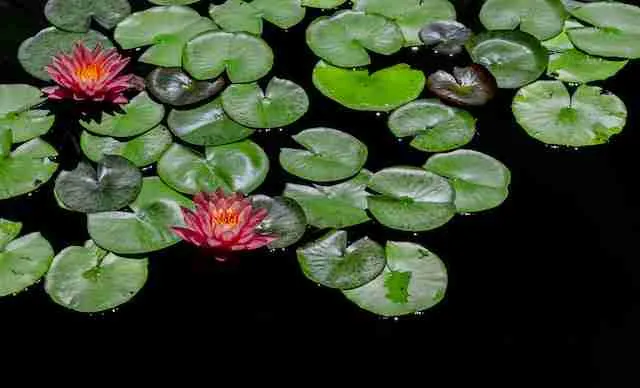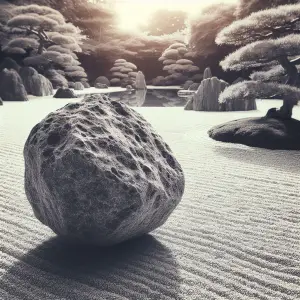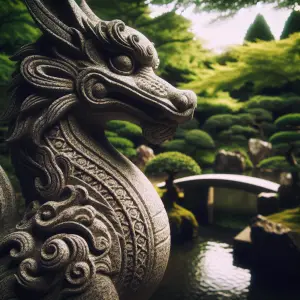In the world of Zen gardens, serene and minimalist spaces meant to promote peace and tranquility, one may wonder if bamboo has a place. With its tall and graceful stalks, bamboo seems to contradict the simplicity that Zen gardens are known for.
However, a deeper exploration reveals that bamboo can indeed find its way into these contemplative spaces, adding a touch of natural beauty and symbolizing strength and resilience. So, the question remains: do zen gardens ever include bamboo? Let’s uncover the answer together.
Understanding Zen Gardens
Concept and Origin of Zen Gardens
Zen Gardens, also known as Japanese rock gardens, are a unique form of landscaping that originated in Japan during the Muromachi period (14th-16th centuries). Derived from the principles of Zen Buddhism, these gardens are an embodiment of simplicity, harmony, and tranquility. The concept of Zen gardens revolves around the idea of creating a miniaturized version of a natural landscape, allowing individuals to meditate and find inner peace. These gardens are meticulously designed to capture the essence of nature and provide a serene environment for contemplation.
Symbolism Ascribed into Zen Gardens
Zen gardens are not merely decorative landscapes; they encompass profound symbolism that guides their design and elements. Each element serves a specific purpose and holds symbolic meaning. For example, the raked gravel or sand represents the flow of water and waves, while rocks symbolize mountains or islands. These elements, combined with the careful arrangement of plants, bridges, and other features, create a symbolic representation of the natural world, allowing individuals to connect with nature on a deeper level.
Common Elements Found in Zen Gardens
While the design of Zen gardens may vary, there are several common elements that can be found in most traditional Zen gardens. These include rocks, gravel or sand, bridges, lanterns, and water features. Plants are also an integral part of Zen gardens, with specific species chosen for their symbolism and aesthetic appeal. The combination of these elements creates a harmonious and balanced composition, inviting individuals to immerse themselves in the serene atmosphere.
The Role of Plants in Zen Gardens
Traditionally Incorporated Plants
In traditional Zen gardens, plants are used sparingly and are carefully selected for their ability to blend harmoniously with the rocks, gravel, and other elements. Evergreen trees and shrubs, such as pine and juniper, are commonly used to represent longevity and resilience. Moss, another frequently employed plant, adds a touch of green to the otherwise minimalist landscape. These plants are strategically placed to create a sense of order and balance, while also complementing the surrounding elements.

Contemporary Use of Plants in Zen Gardens
In modern interpretations of Zen gardens, the inclusion of plants has become more diverse, allowing for a wider range of colors and textures. While the principles of simplicity and harmony are still adhered to, designers have embraced the idea of incorporating a greater variety of plant species. Flowering plants, such as cherry blossoms and azaleas, are often introduced to add vibrancy and seasonal interest. This contemporary approach adds a new dimension to Zen gardens, while still preserving the tranquility and introspective qualities they are renowned for.
Symbolic Role of Plants in Zen Gardens
Plants in Zen gardens hold symbolic meanings that deepen the overall experience. Pine trees, for example, symbolize endurance and resilience, reflecting their ability to withstand harsh conditions. The carefully pruned branches of these trees evoke a sense of discipline and contemplation. Moss represents age and tradition, grounding the garden in a sense of history and permanence. The use of specific plants in Zen gardens is a deliberate choice, emphasizing the connection between nature, spirituality, and one’s inner journey.
Exploring the Use of Bamboo in Zen Gardens
Occurrence of Bamboo in Zen Gardens
Bamboo, although not traditionally associated with Zen gardens, has found its way into some contemporary designs. While it may not be a prevalent feature, bamboo can be incorporated strategically to introduce a contrasting element that adds texture and movement. Its vertical growth and elegant swaying in the breeze provide a dynamic counterpart to the static rocks and raked gravel.
Symbolism of Bamboo in Zen Gardens
In Japanese culture, bamboo holds great significance and symbolism. It is seen as a symbol of strength, flexibility, and endurance. These qualities resonate with the principles of Zen gardens, making bamboo an appropriate addition for those seeking a deeper meaning in their garden spaces. The tall and slender nature of bamboo also represents an upward striving and growth, reminding individuals to seek enlightenment and transcendence.
Different Ways Bamboo is Used in Zen Gardens
When bamboo is used in Zen gardens, it is often strategically placed to create focal points or to draw the eye towards specific areas. Bamboo can be arranged in groups to create a dense, textured screen, providing privacy and enclosure within the garden. It can also be used as a decorative feature, serving as a backdrop for rocks, water features, or sculptures. The versatility of bamboo allows designers to experiment with its placement and explore its aesthetic and symbolic role in the overall composition.
Importance of Bamboo in Japanese Culture
Bamboo’s Role in Japanese Art, Design, and Architecture
Bamboo holds a prominent place in Japanese culture, spanning various disciplines such as art, design, and architecture. Its flexible and durable qualities have made it a preferred material for creating various objects, ranging from tea utensils to furniture and even entire structures. The intricate weaving techniques used to create bamboo baskets and screens exemplify the deep appreciation for craftsmanship and attention to detail in Japanese culture. Bamboo’s versatility has allowed it to become an integral part of Japanese aesthetics and functionality.
Bamboo Symbolism in Japanese Culture
In Japanese culture, bamboo symbolizes resilience, purity, and strength. Its ability to bend without breaking is seen as a reminder to stay flexible in the face of adversity. Bamboo is often associated with purity due to its hollow interior, representing a sense of emptiness and the concept of enlightenment. The slender, upright stature of bamboo reflects strength and integrity, reminding individuals of the importance of standing firm in their beliefs.
Connection of these Cultural Elements to Zen Gardens
Given the deep-rooted connection between Japanese culture and Zen gardens, incorporating bamboo into these landscapes feels like a natural progression. By integrating bamboo, designers can tap into the rich symbolism and historical significance it holds within Japanese culture. It allows for a deeper layer of meaning and cultural context to be woven into the fabric of Zen gardens, creating a space that not only provides tranquility but also celebrates the traditions and values that underpin Japanese society.

Considerations When Including Bamboo in Zen Gardens
Size and Growth Pattern of Bamboo
When considering the inclusion of bamboo in a Zen garden, it is essential to take into account the size and growth pattern of the chosen bamboo species. Bamboo has a reputation for being fast-growing and can potentially overwhelm the garden if not properly managed. Selecting a bamboo species with a manageable growth habit and controlling its spread through proper maintenance is crucial to avoid any negative impacts on the overall design and integrity of the garden.
Maintenance Requirements for Bamboo in Zen Gardens
Maintaining bamboo in a Zen garden requires regular upkeep to ensure its proper growth and appearance. Bamboo plants should be pruned annually to remove any dead or diseased canes and to maintain the desired shape. Trimming the bamboo’s foliage helps control its density and prevents it from overshadowing other elements in the garden. Moreover, monitoring the plant’s health, providing adequate water, and ensuring proper soil conditions are vital for the long-term well-being of the bamboo and the overall success of the Zen garden.
Choosing the Right Variety of Bamboo for Zen Gardens
Selecting the right variety of bamboo is crucial when incorporating it into a Zen garden. It is recommended to choose clumping bamboo species instead of running bamboo to control its growth and prevent it from spreading uncontrollably. Some suitable varieties for Zen gardens include Fargesia nitida, Fargesia murieliae, and Pleioblastus distichus. These species have manageable growth patterns, do not require extensive containment measures, and provide a graceful aesthetic that complements the Zen garden’s overall ambiance.
Examples of Zen Gardens that Include Bamboo
Famous Zen Gardens Incorporating Bamboo
One notable example of a Zen garden that incorporates bamboo is the Ryoan-ji Temple in Kyoto, Japan. In this renowned garden, bamboo is strategically placed on the periphery of the garden, creating a natural screen that enhances privacy and focuses attention on the central rock composition. The Kokedera Moss Garden, also known as Saihoji Temple, features several varieties of bamboo that contribute to the garden’s overall tranquility and provide a sense of enclosure.
Modern Zen Gardens With Bamboo Elements
Contemporary designers have embraced the inclusion of bamboo in Zen gardens, resulting in innovative compositions that incorporate both traditional and modern elements. The Portland Japanese Garden in Oregon, United States, features a stunning bamboo grove that provides a serene backdrop for contemplation amidst the lush greenery. The Adachi Museum of Art in Japan incorporates bamboo as a natural partition, merging the indoor and outdoor spaces and showcasing the seamless integration of traditional and contemporary design techniques.
Case Studies of Bamboo in Zen Gardens
Numerous private gardens around the world have successfully incorporated bamboo into their Zen designs, showcasing the versatility and adaptability of this plant within the context of Zen aesthetics. These case studies demonstrate the different ways in which bamboo can be utilized in Zen gardens, from creating focal points to providing natural enclosures. Each garden reflects the owner’s unique vision and interpretation of Zen principles, while also acknowledging the timeless appeal of bamboo in creating a serene and harmonious atmosphere.

Accommodating Bamboo in Small Zen Gardens
Sensible Utilization of Bamboo in Limited Spaces
Even in small-sized Zen gardens, bamboo can be thoughtfully integrated to add verticality and depth. One approach is to select compact bamboo species that have a restrained growth habit, ensuring they do not overwhelm the limited space. Utilizing bamboo in the corners or along the edges of the garden can create a sense of enclosure without dominating the entire area. By adopting a minimalist and mindful approach, bamboo can enhance the serenity of small Zen gardens without sacrificing their intimate and tranquil nature.
Considerations for Small Zen Gardens with Bamboo
When incorporating bamboo into small Zen gardens, it is vital to consider the space constraints and the potential impact on the overall design. Avoid choosing bamboo species with aggressive spreading tendencies, as they can quickly outgrow the limited area and become visually overwhelming. Opting for dwarf or clumping bamboo varieties can help maintain a harmonious balance within the confined space. Additionally, careful pruning and maintenance will play a crucial role in managing the size and proportion of the bamboo, ensuring it remains complementary to the overall garden composition.
Examples of Small Zen Gardens with Bamboo
Small Zen gardens with bamboo offer a haven of tranquility, even with limited space. By strategically placing bamboo in designated areas, such as alongside a pathway or near a water feature, the garden can still evoke a sense of serenity and harmony. Japanese courtyard gardens, known as tsuboniwa, often feature the careful integration of bamboo to create an intimate and contemplative setting. These small-scale gardens serve as inspiring examples of how bamboo can be successfully incorporated into limited spaces without overpowering the overall aesthetic.
Creating a Zen Garden with Bamboo: A Step by Step Guide
Planning the Zen Garden Layout
When designing a Zen garden that includes bamboo, it is essential to begin with a detailed plan. Consider the available space, desired focal points, and overall ambiance you aim to create. Determine the areas where bamboo will be incorporated, whether as screens, borders, or standalone features. Sketch out the layout, taking into account the dimensions and growth patterns of the chosen bamboo species. Planning ahead will ensure a cohesive and balanced design, allowing the bamboo to harmonize with other elements in the garden.
Choosing and Preparing the Bamboo
Selecting the right bamboo species for your Zen garden is crucial to its success. Research different varieties and consider their growth habits, height, and overall appearance. Choose a species that aligns with your desired aesthetic and is suitable for the available space. Once the bamboo has been selected, prepare the planting area by ensuring proper soil conditions and drainage. If necessary, create containment measures such as root barriers to prevent the bamboo from spreading excessively.
Ongoing Maintenance of the Bamboo Zen Garden
Maintaining a Zen garden with bamboo requires regular care and attention. Prune the bamboo annually to remove any dead or unhealthy canes and maintain the desired shape and density. Bamboo should be watered regularly, especially during dry periods, to ensure its proper growth and prevent stress. Monitor the health of the plants, keeping an eye out for any signs of disease or pest infestation. By providing ongoing care and maintenance, your bamboo Zen garden will flourish and continue to evoke a sense of tranquility.
Challenges in Using Bamboo in Zen Gardens
Common Issues with Bamboo Growth
While bamboo can add beauty and symbolism to a Zen garden, it is not without its challenges. One common issue with bamboo is its rapid growth, which can quickly overpower the intended design and invade neighboring areas. This growth can be mitigated through regular pruning and containment measures, such as using root barriers or planting bamboo in raised beds. Additionally, bamboo’s aggressive rhizome system may require diligent monitoring to prevent it from spreading and encroaching on other plants or structures within the garden.
Environmental Impacts on Bamboo in Zen Gardens
Bamboo, as a plant, has specific environmental requirements that must be considered when including it in a Zen garden. It prefers well-drained soil and adequate sunlight to thrive. However, extreme temperature fluctuations or prolonged drought can negatively impact the growth and overall health of bamboo. It is important to understand the local climate and provide suitable conditions for the bamboo to flourish. By ensuring the necessary environmental factors are met, the bamboo in the Zen garden can thrive and contribute to the desired atmosphere.
Solutions to Common Bamboo Challenges
To address the challenges associated with bamboo in Zen gardens, there are several practical solutions available. Regular pruning and maintenance play a significant role in controlling bamboo growth and preventing it from becoming unruly. Containment measures, such as root barriers, can be installed to limit the spread of rhizomes. Additionally, selecting clumping bamboo species or cultivars with restrained growth habits can help maintain a manageable size within the garden. By implementing these solutions, the potential challenges of incorporating bamboo into Zen gardens can be effectively managed.
Conclusion: Bamboo’s Integration in Zen Gardens
Reiterating the Role of Bamboo in Zen Gardens
While bamboo may not be a traditional component of Zen gardens, its integration adds a layer of depth and symbolism to these serene landscapes. Bamboo embodies the principles of strength, resilience, and flexibility, aligning with the ethos of Zen philosophy. Its graceful appearance and vibrant green foliage provide contrast and movement, enriching the overall composition of the garden. By incorporating bamboo, designers and enthusiasts alike can evoke a sense of harmony and contemplation within their Zen gardens.

Summarizing the Steps to a Bamboo Zen Garden
Creating a bamboo Zen garden involves careful planning, the selection of appropriate bamboo species, and ongoing maintenance. By following a step-by-step approach, starting with a well-thought-out layout and selecting the right bamboo variety, individuals can design a garden that embraces the serenity and symbolism of Zen philosophy. Monitoring and maintaining the bamboo’s growth and health are important for preserving the garden’s integrity and ensuring its continued beauty.
Potentials in Future Bamboo Zen Garden Designs
As the appreciation for Zen gardens and bamboo continues to grow, the potential for future designs is boundless. The fusion of traditional Japanese aesthetics with contemporary interpretations offers exciting avenues for creative expression. Designers can experiment with unconventional combinations of plants, innovative arrangements, and dynamic spatial layouts. By pushing the boundaries of traditional norms, future bamboo Zen gardens have the potential to captivate and inspire individuals, inviting them into a realm of tranquility, contemplation, and connection with nature.




